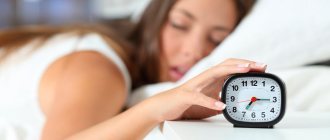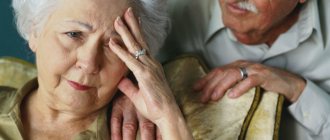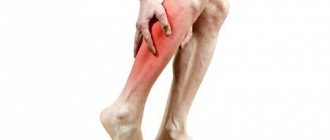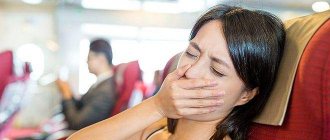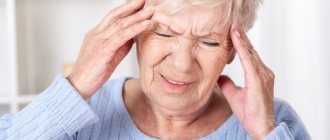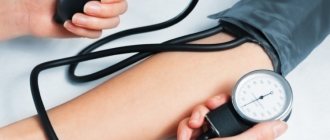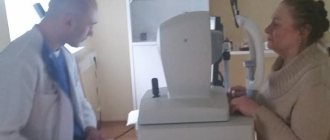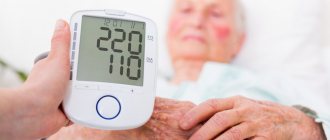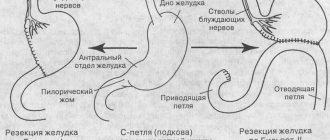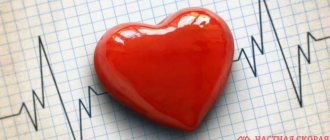A stroke is a signal to change your life, restore and maintain health. “Consider this your second chance,” says Alexander Atyashev, a neurologist at the Medicare clinic. How to recover from a stroke and what can relatives do to bring maximum benefit to the patient during the rehabilitation period?
Alexander Atyashev.
To minimize the consequences of an ischemic stroke, there is only the first 4.5 hours
— Alexander, what happens in the body during a stroke and why are its consequences so serious?
— A stroke is an acute disorder of cerebral circulation when the blood supply to any part of the brain is cut off. The blood supply is disrupted - and damage or death of brain cells occurs, and this leads to disruption of any body function - speech, movement of the limbs, mental abilities, attention, memory, etc.
— Why is cerebral circulation disrupted?
- A stroke occurs either due to a blockage of a blood vessel that supplies the brain (ischemic stroke) or when a blood vessel in the brain ruptures (hemorrhagic stroke).
Blockage of the vessel can be caused by the formation of atherosclerotic plaques (fatty deposits) or a blood clot that enters the bloodstream and causes a blockage of the artery.
Vessel rupture during a hemorrhagic stroke usually occurs in the softened artery wall: blood leaks out and accumulates, which leads to compression of brain tissue and cell damage. In both cases, as a result of a lack of oxygen, some brain cells at the site of the stroke die, and some are damaged.
Within minutes, the person loses the ability to reason, speak, or move their arms or legs.
about possible contraindications, consult a specialist
- What symptoms indicate a stroke?
— There is a simple test that will help relatives recognize a stroke. You need to ask him to do only three actions: smile, raise both hands and say his name. If the corner of the mouth droops when smiling, if a person cannot raise his arms because one of them is weak, and if he pronounces his name unintelligibly, call an ambulance immediately.
Remember: in case of an ischemic stroke, to effectively remove a blockage of a vessel (thrombus), there is only 4.5 hours until the cells of the damaged area are completely dead.
Signs of a stroke may also include:
- sudden numbness of the face, arms, legs, weakness in the limbs,
- sudden loss of consciousness, loss of ability to speak, difficulty speaking, loss of ability to understand the meaning of someone else’s words,
- sudden loss of vision in one or both eyes,
- sudden disturbance in gait, dizziness, loss of balance,
- sudden severe headache of unknown cause,
- sudden nausea, pain in the face or limbs, general weakness (more often in women).
— Why is it so important to seek medical help in the first hours after a stroke?
— A stroke is an emergency. Medical care is most effective only in the first 3-5 hours: this is the so-called therapeutic window, during which treatment can restore damaged brain cells and minimize the consequences of a stroke. If you do not seek help in time, the cells will die irrevocably, and further treatment will be aimed only at adapting to life, taking into account the existing disorders.
about possible contraindications, consult a specialist
— How is a microstroke different from a regular stroke? Is it just as dangerous and also requires treatment?
— A microstroke, or transient ischemic attack (TIA), is a temporary disruption of the blood supply to part of the brain, that is, a harbinger of a stroke. During a TIA, a person may experience some or all of the symptoms described above.
The peculiarity of a micro-stroke is that these symptoms are usually mild and pass quickly - the next morning a person can feel great.
But take them seriously - be sure to call an ambulance! Your health and life depend on it.
Why an elderly person may refuse food
Before prescribing treatment, the doctor must determine why the desire to eat has disappeared. Some of the most common causes of poor appetite include the following:
- chronic diseases of the gastrointestinal tract;
- stomatitis;
- pneumonia;
- oncology;
- thyroid diseases;
- infections of various etymologies;
- acute respiratory diseases;
- mental disorders, dementia;
- consequences of physical or psychological trauma;
- side effects of drugs.
In addition, refusal to eat can be triggered by bad habits: drinking alcohol or smoking. The doctor conducts diagnostics, prescribes examinations that will help identify the cause and select therapy.
It is important to remember: the longer this condition is left unattended, the less chance of recovery. The last stage begins when the grandfather or grandmother does not eat, only drinks, bile and vomiting occur. In this case, urgent hospitalization is required: only emergency measures will help.
Rehabilitation begins on the first day
— When can you start rehabilitation after a stroke?
- After completion of treatment of the acute phase, that is, in fact, on the first day after the stroke. Even if the patient is still lying down, he can and should move - turn his head, move his arms and legs, try to sit up.
Even with bedridden patients, you can and should do passive exercises.
The rehabilitation program begins in the hospital and continues at home (or in a sanatorium, medical center). Every day after a stroke is work on the road to recovery.
about possible contraindications, consult a specialist
— What should be the first step in the recovery process?
— First of all, you need to work on correct body positioning: this facilitates the restoration of motor abilities, prevents muscle injuries, contractures, and reduces pain. Main principles of positioning:
- maintain the maximum possible symmetry of key points (shoulders, shoulder blades, pelvis), keep the head, shoulders, hips in the correct position.
- golden melt - the patient lies on either side, but not on the back.
- do not ignore the immobile part of the body. The bedside table is placed on the affected side so that when moving, for example, behind a mug, the patient reaches across the affected side and uses it. Learn to use your weak hand - for support, support, opening a door, turning on a light. It is important to develop a strong habit of using your weak hand as much as possible.
— Does the patient need physical therapy?
- Necessarily. Exercise therapy is necessary to restore movement skills and prepare for the moment when you can move more fully. As a result of regular exercises, shortened muscles of the hand, forearm, and back of the legs will be stretched, weakened arm muscles will be activated, the amplitude of movements will increase, and balance while sitting and standing will improve. If the patient has speech impairment, articulation exercises are necessary (for the tongue, lips, lower jaw muscles, facial muscles). Vestibular gymnastics is needed to restore coordination of movements, exercises for rehabilitation for movement disorders. Having mastered these exercises under the guidance of a doctor, you can do them at home - first with the help of relatives, then on your own. The main thing is regularity: 5-6 times a week, 30-40 minutes a day.
Advice to the patient’s relatives: treat his complaints wisely and do not allow him to succumb to laziness and despondency.
A patient in this state is most often inclined to lie down, but your task is to insist that he moves. Adequately assess his condition, and if he can get to the toilet on his own, do not place the dry closet near the bed. If the patient is able to feed himself, do not spoon feed him.
Refusal to eat in bedridden elderly after stroke
If age-related whims and stubbornness can still be somehow dealt with, then how can you force an elderly person to eat if he is bedridden? In such cases, refusal to eat indicates irreversible destructive processes occurring in the body. The patient gradually fades away, and there is practically no hope for recovery.
Relatives, trying to feed the patient, believe that they are helping him, but in reality they are only making things worse. In such situations, all that remains is to ensure that the person receives a sufficient amount of fluid. If he can no longer swallow water or tea, he should periodically moisten his lips with a wet cotton pad or a clean cloth so that the patient does not have dry mouth.
If the grandfather or grandmother does not eat anything, only drinks water, this is not the worst thing. When the body stops even accepting liquid, it’s time to connect special devices for artificial feeding, but this should only be done under the supervision of specialists.
Relearn to speak, eat, understand and remember
— How should you prepare a home for a patient after a stroke? And what additional equipment will he need?
— While the patient is regaining the daily skills necessary to independently care for himself, while he has difficulty moving, it is necessary to ensure that he can move safely. For this:
- remove carpets and wires on the floor to prevent the patient from tripping. Make sure all paths the patient uses are clear and well lit.
- equip the bed with rails so he can sit down
- in the bathroom, attach special vertical railings that the patient can hold on to,
Special devices - a toilet chair, a bath seat - will make the patient’s life easier at home.
- install a seat in the bathtub or shower so that the patient can wash while sitting,
- raise the height of the toilet using a bedside chair,
- when the patient learns to walk, buy him a walker, and later a cane.
about possible contraindications, consult a specialist
— After a stroke, people often have speech impairments. Can it be restored?
— Yes, articulation gymnastics, which I mentioned above, as well as classes with a speech therapist, help restore speech functions, but the main thing is communication with loved ones, that is, daily speech practice. Speech disorders can be of two types - aphasia (the patient has difficulty understanding words and expressing his thoughts) and dysarthria (there is understanding, but pronunciation and fluency and clarity of speech are impaired). General rules:
- Ask questions that the patient can answer “yes” or “no.”
- speak slowly and clearly, give the patient time to respond, do not speak for him.
- be patient and consistent. With regular exercise, improvement will definitely come over time.
— What should a person be fed after a stroke?
- Patients with stroke often have a problem with impaired swallowing - dysphagia, and there is a risk of obstruction of the esophagus and aspiration (penetration of foreign bodies into the lungs). It can cause suffocation, infectious diseases, and pneumonia. Such patients need to be fed, strictly following the recommendations: only in a sitting position with support under their back, turning to the healthy side at the time of swallowing, only with a small amount of food.
Semi-hard foods are best tolerated - casserole, thick yogurt, pureed vegetables and fruits, watery porridge.
Give solid and liquid foods at different times. Eliminate from your diet foods that often cause choking - bread, cookies, nuts, etc.
— What other disorders does a stroke lead to?
— During a stroke, areas of the brain that are responsible for the processes of learning, understanding, and communication can be damaged. Memory deterioration and problems with perception are often observed: a person does not realize that the functions of his body are impaired, he does not recognize familiar objects or people, he may ignore some part of the body. Over time, with proper therapy, lost skills will be restored, but this is a slow process.
At home, you can and should exercise your memory and attention: ask the patient about what he did/saw yesterday, look at a family album, solve riddles, remember similar objects by shape, color, etc.
Another important point is the patient’s mood. A person experiences despondency, emptiness and hopelessness due to the fact that he cannot fulfill his previous social functions (work, take care of his family), a feeling of humiliation due to lost basic skills, and may refuse to communicate. Sudden mood swings, aggression, anger, laughter and tears for no reason are possible.
In such cases, the patient may need treatment with antidepressants, and relatives may need to be calm and refrain from criticism.
Both the patient and his family need to remember that all of these are consequences of a stroke, which will go away as they recover.
about possible contraindications, consult a specialist
When an elderly person is just a hostage of circumstances
Poor appetite in old age is quite common. The natural functions of the body weaken, a person leads a sedentary lifestyle and spends less energy. Accordingly, the desire to eat decreases. The functioning of taste buds deteriorates: favorite dishes no longer give the same pleasure. It turns out to be a vicious circle: a pensioner needs less food, which causes weakness and loss of strength. Gradually, interest in food disappears completely.
Refusal to eat often occurs gradually. First, the pensioner stops eating meat, as it takes a long time to digest. Then he gives preference to some light food: cereals, purees, soups. After some time, even such dishes begin to be digested with difficulty; the patient eats less and less and only drinks water, milk, and fermented milk products.
If an elderly person does not eat well, what should relatives do, and should they be forced to eat? It is unlikely that it will be possible to feed through force: a pensioner may simply spit out food or press his lips tightly together, not succumbing to the persuasion of loved ones. Such demonstrative behavior requires radical measures; only a doctor and specially selected therapy will help.
You cannot shout or put pressure on the patient - this will only worsen the condition. Sometimes the patient simply does not understand what is happening to him due to psychological reasons or various diagnoses. Relatives have to show maximum patience and attention. If there is no time and opportunity for full care, you can use the services of private boarding houses. Such institutions have the necessary equipment for feeding, and the staff is trained to work with even the most capricious and demanding guests.
Move!
— How to choose the right physical activity after a stroke?
— It is necessary to move regardless of the degree of impairment after a stroke, with any degree of limitation.
If the functions of your legs and arms are not impaired, get up and start moving as quickly as possible! Do physical therapy, take the stairs instead of the elevator, walk down the street, garden, play with your grandchildren. Any activity that you enjoy is fine—just make a commitment to move every day.
If there is weakness in the limbs, but they work, you can walk, including on a treadmill, it is useful to swim, do gymnastics in the pool, yoga, and dancing.
Even if the patient is in bed or in a wheelchair, he can also move - do strength exercises, stretching exercises.
— Can a person always return to normal life after a stroke?
“It depends on the volume of damaged cells, what part of the brain is affected and whether medical assistance was provided on time. With due persistence, patience, and the help of doctors and relatives, lost functions are restored.
In my practice, there were patients who returned to work even after several strokes.
Both the patient and his family need to understand that recovery is a long and complex process; one should not expect instant results and fall into despair when they do not exist. There will be good days when you make huge strides, and bad days when you seem to have slipped back to where you started. Don’t strive to embrace the immensity, don’t rush things, but divide your goals into:
- the nearest ones - which can be tracked and measured. For example, if the patient was lying down in the first days, the immediate goal would be to sit up in bed and eat on his own. Holding a mug, getting up and walking to the door of the room, doing hygiene procedures - all these are also immediate goals.
- distant - what you want to achieve in 6 months or more. Return to work, sports, hobbies - it is better to discuss all these goals with your doctor to understand what degree of functional restoration you can expect.
Eating tips for older adults after a stroke
There are several alternative ways to help feed an elderly person without causing him any inconvenience:
Nasogastric tube
Probe installation is indicated in the following situations:
- stroke resulting in partial or complete impairment of swallowing function;
- swelling of the larynx, esophagus, pharynx;
- surgical interventions after which normal eating is temporarily impossible;
- psychological disorders accompanied by food refusal;
- unconscious and comatose state of the patient.
Using a feeding tube, you don't have to worry about getting an older person to eat. Food is supplied using a sterile syringe and funnel. Dishes should be warm and pureed. The diet mainly consists of cereals, broths, kefir, and special nutritional mixtures.
Gastrostomy
The device allows you to introduce food directly into the gastrointestinal tract, bypassing the oral cavity and esophagus. It is most often used after surgery or for cancer of the throat, pharynx, and larynx. Using a gastrostomy tube, the patient is given soups, cereals, jelly, raw eggs, milk and fermented milk products.
Parenteral nutrition
The method is a special form of intravenous therapeutic nutrition. It is used in cases where the patient cannot eat food on his own. Special drugs are administered intravenously and ensure that the body receives the necessary nutrients to maintain life. Mixtures are selected individually, taking into account the age and condition of the patient.
Taking medications
Life expectancy after a stroke largely depends not only on medical care, but also on the literacy of further rehabilitation. After being discharged home, you should not let the disease take its course. A person must strictly follow the recommendations of doctors. This primarily concerns taking medications. The most commonly prescribed drugs are those designed to improve blood circulation in the brain area. nootropic drugs increase the production of phospholipids and the synthesis of nucleic acids, improve glucose absorption, and reduce excessive activity of nerve cells.
The rehabilitation period includes the use of medications
In addition to nootropics, patients are prescribed antispasmodics, antidepressants, and sedatives. More than 30% of people after an attack have an unstable emotional state, suffer from depression and sleep disorders. This is due to the fact that it can be quite difficult to return to normal life on your own, which is associated with many complications after a stroke.
Important! In the family where the person is after suffering an attack, a positive emotional environment should reign.
